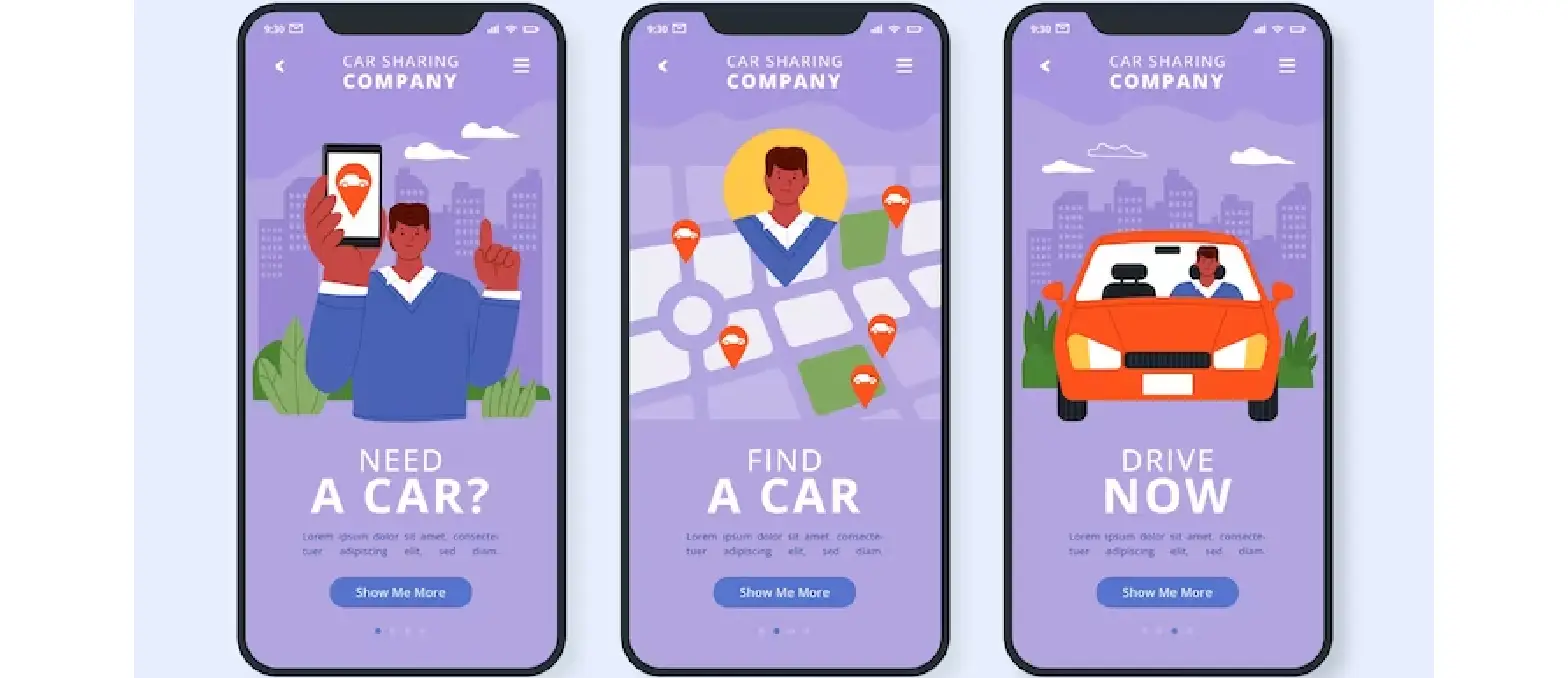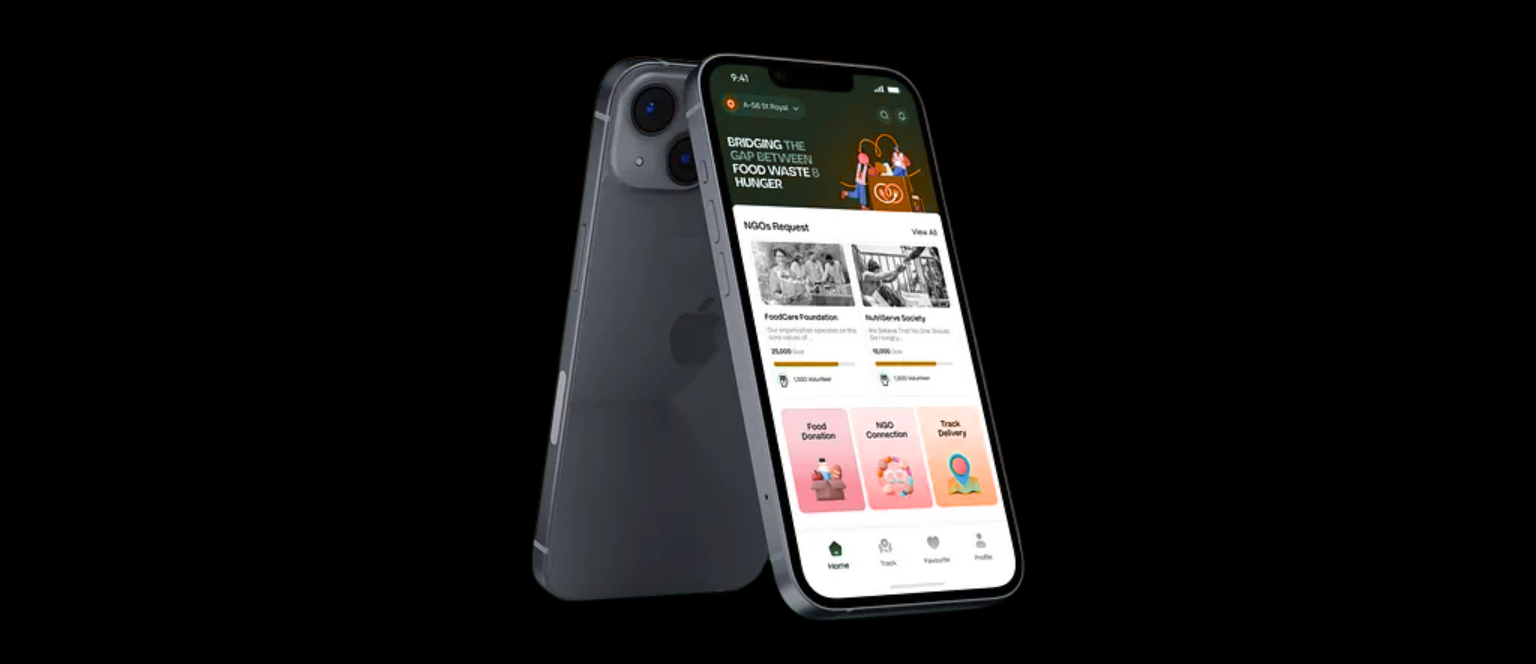When we say healthcare, what’s the first thing that comes to your mind? We are sure that all you can think of is lifesaving technologies, healthcare expertise, tirelessly working staff members and a healthy environment where everyone is trying their best to make patients’ lives better. But this industry is more than that, especially when it comes to processes and operations. Despite advanced procedures and technologies, the sector has to deal with an enormous amount of paperwork, including medication data, patients’ medical history & records, insurance claims, emergency service records, and more. The challenges in handling huge amount of data and operations gave rise to EDI solutions in healthcare industry.
Table of Contents
Origin of EDI Integration and Standards
The Problem
As stated by the Health Affairs Report, in the 1990s, “more than 400 electronic formats were used to transmit claims and thousands of different claims processing systems”. If we take a look before the mid-90s, the federal limits on healthcare information processing and well-defined rights for patients to check their healthcare records were non-existent. Also, there was no national health privacy law. It was the time when paperless clinics, hospitals, and healthcare centers were a dream for the US healthcare system. It was looking for a more economical, efficient, and result-oriented option to address all the problems.
The Solution
Hence, the HIPAA (Health Insurance Portability and Accountability Act) was enacted in 1996 that established national standards for healthcare EDI transactions. It provided a solution to paper-based medical forms and manual medical data culture. With the introduction of HIPAA, organizations adopted EDI software solutions and transformed data exchange to electronic data interchange protocol. This revolution was a game-changer that reduced data management costs and ensured more accurate records while addressing compliance issues.
The sector started transmitting data in standard formats via EDI protocol that also filled security gaps and patients’ lack of access to their medical records. The typical standard used in healthcare is ANSI X12 EDI transaction set. However, there are other transaction standards, such as EDIFACT to manage directories and standard messages.
What Made HIPAA Compliance Essential for EDI Providers?
As aforementioned, HIPAA defines the roadmap to process complex data such as insurance claims. HIPAA makes healthcare data administration more secure and efficient through EDI services.
This secure method of electronic data allows even the most critical or confidential data to transmit without the overhead stress. This strict and secure passageway was prepared after realizing that different healthcare providers used local or proprietary codes, which turned out to be sometimes confusing and difficult to navigate.
These specified standards are meant to reduce the complexity of parties in the healthcare industry. With different transaction sets today in any service industry, companies can have customized EDI solutions to reach their objectives.
The National Provider Standard was also introduced to reduce the complexity of managing different transaction standards, such as claims, payments, enrollment, eligibility inquiries, and claim status requests for employers, healthcare providers, and individuals. NPI takes a vital place in healthcare EDI transactions as only NPI allows you to submit the standard HIPAA transactions.
Although the technology brought great changes to the industry, it was still required to make sure that people use the right tools for utmost security and compliance. Electronic Data Interchange is secured, encrypted, and allows electronic transmission between computer systems and applications which is a completely different concept then email exchanges. IT professional services providers strive to improve EDI more and more each day for organizations to take complete advantage and scale their business easily.
For better understanding, take a look at how healthcare EDI works and benefits the industry on a large scale.
We Make Healthcare Data Management Easy for You
Explore our EDI Services
How Does EDI in Healthcare Work?
EDI in Healthcare allows quick and easy exchange of computer-processable data in a standardized and secure format between healthcare institutes, professionals, and patients as well. However, as we said earlier, it should not be confused with email or something similar. EDI is the electronic transmission between systems or applications that vary according to end-users and mode of delivery.
It can be transmitted in:
- P2P EDI (point-to-point EDI services)- where partners exchange messages directly
- VAN EDI (value-added network EDI)- a third-party routing service where VAN receives a message, examines the data, and then sends it to the recipient.
- Cloud-based EDI services
- Mobile EDI, etc.
EDI relies on standard messaging formats for organizations to communicate with each other and the industry has exclusively designed standards. Now all the healthcare EDI transactions must adhere to HIPAA regulations and ANSI standards. The EDI software converts the document or file into computer language, assigns a transaction code to each of them with every transaction containing a unique name, number, and usage information. When received, the recipient’s software converts the file back into the original format.
The healthcare transactions included are:
- Claims and encounters information
- Payment and remittance advice
- Claims status
- Eligibility
- Enrollment and disenrollment
- Referrals and authorizations
- Coordination of benefits
- Premium payments
Benefits of EDI Solutions in Healthcare
Standardization
The primary benefit of EDI in healthcare is that it standardized electronic healthcare transactions. The HIPAA established national and global standards for communications and enhanced efficiency in patient transactions. It replaced the use of local or proprietary formats which created confusion and complexity and made all messages clear and comprehensible. Now, there are no more errors or need to spend time to decode received message formats as everything is consistent. Moreover, HIPAA EDI transactions made data exchange more accurate, organized, compliant, and efficient.
Standardization allows healthcare organizations to communicate electronically and share data efficiently. EDI providers require all participants to adhere to a standard format for electronic transactions like claims, eligibility inquiries, referrals, and authorizations.
When organizations use EDI, they can automatically process electronic documents without human intervention. This is because EDI uses structured formats that computers can interpret without ambiguity. The standard layout and code sets in EDI ensure that data sent by one party can be read and processed accurately by the recipient systems.
There are EDI standards for different healthcare transactions. For instance, the X12N 837 standard format is used for healthcare claims. All insurance payers and providers must comply with this standard format for claims. This means the data elements have fixed definitions, specific positions within the transaction, and standard codes.
When all parties follow EDI in healthcare, huge amounts of data can be exchanged automatically. Standardization eliminates the need to rekey information and minimizes manual errors. EDI standardization also saves time and resources. Organizations do not have to custom-code their systems for every trading partner. They just need to implement the standard EDI format once and can then transact electronically with any organization that follows the same standards. This plug-and-play ability streamlines communications across the healthcare ecosystem.
Enhanced Productivity
The use of EDI for healthcare can improve productivity by making data transmission faster, more efficient, and accurate. There is limited human intervention in the transmission which also reduces errors due to reduced manual data entry, illegible handwriting, and lost emails or faxes. Needless to say, that health institutes and centers can save a huge amount of time which is otherwise wasted in filling forms, transmitting information, correcting data, and confirming that the recipient got the forms or not. With electronic attachments, the data transmission process between patients, healthcare providers, government authorities, and insurers is streamlined. Furthermore, stakeholders and staff members can divert their attention to other core activities. With EDI managed services providers, organizations can utilize powerful tools for insurance claim documentation. There will be fewer denials or rework requests with transactions to multiple buyers done simultaneously.
Before EDI managed services, employees spent hours printing, reviewing, sorting and mailing paper-based transactions like insurance claims. Once the workers receive the documents, they had to manually enter the data into the computer systems. This process was prone to errors and inefficiencies.
With EDI, electronic transactions are sent and received directly by organizations’ computer systems. There is no need for printing, mailing, data re-entry, scanning or faxing documents. The accurate data is automatically populated into the relevant database fields and workflow applications.
Workers no longer have to spend time resolving issues arising from manual errors or unclear handwriting on paper documents. EDI removes the ambiguities that often plague communications based on paper forms.
The automated matching and confirmation features of EDI also help eliminate redundant tasks. For example, top EDI providers positive or negative acknowledgments after transactions are exchanged and received. This confirmation process minimizes repeated inquiries about document status.
Improved Security
Security is a major concern for many healthcare institutes and centers. They are sparing no effort to ensure that their data is secure and safeguarded from any theft or vulnerabilities. Healthcare organizations understand the importance of value addition hence abide by the rules and regulations set by HIPAA. Only authorized people can access data or patients’ personal information through EDI transactions which further mitigates the risk of HIPAA violations significantly and better data management. This not only protects patients but also lowers the risks of financial penalties.
EDI services offer better security for exchanging sensitive healthcare information compared to traditional paper-based methods. When organizations use EDI, electronic channels are established between trading partners to transmit data. These secure connections enable data to be sent and received safely and confidentially.
With EDI, security features like digital signatures, encryption, and access controls are implemented to authenticate senders, encrypt data in transit, and restrict access to authorized users only. When sensitive patient data is exchanged electronically over secure EDI connections, the risk of data loss, theft, or unauthorized access is much lower.
In contrast, physical documents developed by EDI service providers in USA containing protected health information, like paper claims and medical records, are vulnerable at multiple points when using manual processes. Documents may be lost, stolen or accessed by unauthorized personnel during printing, mailing, sorting, filing and storage. There are fewer safeguards against data breaches with paper documents moving through an organization.
Even faxes, which are semi-electronic, are susceptible to security issues like wrong dialing numbers, delays between transmission and reception, and interception by unauthorized parties. EDI offers more robust security compared to faxing documents since data is transmitted directly between secure systems instead of through an unprotected network.
Reduced Costs
EDI integration services for healthcare transactions reduce costs immensely, along with adding convenience. Hospitals and healthcare facilities can cut document processing costs as the data is digitized with an automated system. Paper-based transactions are quite expensive as there are costs related to printing documents, buying papers, time spent to fill the forms, and storing all documents. As per WEDI data, EDI healthcare saves up to $1.00 per claim for health plans, $0.86 for hospitals, and $1.49 for physicians. Also, the transactions are sent and received faster which minimizes the operational and data processing time.
EDI enables healthcare organizations to realize significant cost savings from automating document-intensive business processes. There is a costs reduction in several ways when organizations switch from paper-based to electronic transactions using EDI.
First, EDI services provider eliminates the high expenses associated with printing, mailing, courier services and document storage.
Second, EDI requires fewer full-time employees since most manual tasks are automated. This results in labor cost savings from reduced headcount and overtime.
Third, EDI minimizes costly errors and discrepancies that lead to rework. Electronically transmitted data has fewer errors than handwritten or typed information. This avoids extra labor hours spent resolving issues and resending documents.
Fourth, the standardized formats of EDI in healthcare reduce the need for custom software interfaces between trading partners. Organizations save money by not having to develop and maintain customized internal IT systems for every business partner.
Fifth, EDI enables faster payment processing and claims adjudication since data is transmitted directly into database fields. This accelerates cash flow and results in lower financing costs from reduced accounts receivable days.
Efficiency & Accuracy
Apart from saving time and money, consistency in healthcare also makes EDI transactions more efficient as no manual tasks or humans are involved in the entire process. To sum it up, less manual data entry means greater accuracy. With the assistance of a right EDI managed services provider, one can establish a robust connecting system.
Healthcare facilities don’t have to wait for information to be processed or entered, they can have a properly managed provider to assist them and train to handle EDI systems. This way organizations can learn to set transactions automatically in the system leaving small tasks to the computer. This drastically lowers the chances of mistakes that can be cost a fortune at times. Additionally, the information is reliable with EDI solutions empowering the healthcare industry.
Using EDI, documents are transmitted directly from one computer system to another without any re-entry of data. This removes the inefficient and error-prone steps of printing, scanning, mailing, sorting and manual data entry of paper documents. Electronic transactions can be processed within seconds or minutes, radically faster than documents mailed between organizations.
EDI consulting services also provide real-time confirmation that documents have been received and processed. Any transmission errors are identified immediately for fixing and resending. With manual methods, issues we may not discover issues for days or weeks, requiring time-consuming research and corrective actions.
Overall, EDI eliminates the inefficiencies of printing, mailing, manually re-keying data, waste from errors and delays in addressing issues. Transitioning to EDI from paper decreases processing time for transactions by as much as 98% while increasing data accuracy by 80-95%. The automation and standardization of EDI in healthcare radically improves efficiency and accuracy, benefiting all participants in the healthcare information exchange.
EDI Solutions Customized to Fit Your Business Needs
Talk to our experts today
Key Considerations for Implementing RPA
Here are key considerations for implementing robotic process automation (RPA) in healthcare:
- Identify the right processes. Not all healthcare processes are suitable for RPA. Start with repetitive, rule-based tasks that follow a structured workflow with minimal exceptions. Examples include insurance claims processing, eligibility verification, ordering lab tests and medical supplies.
- Manage change and resistance through top EDI providers. Educate staff about RPA and how it will complement rather than replace their jobs. Explain that robots will handle manual tasks while clinicians can focus on higher value work. Involve stakeholders early to minimize resistance to change.
- Build a center of excellence. Designate a team to evaluate RPA opportunities, establish best practices, train users and monitor performance. The team can identify processes with the most potential, build governance policies and recommend expansions of the RPA program over time.
- Assign process owners. Even automated processes need human oversight. Identify people to serve as process owners, monitoring robot performance, troubleshooting issues and approving exceptions. Process owners ensure compliance, data quality and that bots operate within defined parameters.
- Focus on governance. Develop policies for change management, data protection and security when using RPA. Proper governance builds trust in the RPA program.
- Start small and scale. Pilot RPA for a small subset of tasks to prove value and work out issues. Scale robots gradually across more processes and departments as users gain confidence. Start with a few bots and scale to hundreds as needed to maximize benefits and ROI of EDI services.
Successful RPA Use Cases
The following RPA use cases demonstrate the value of robotic automation for repetitive, data-intensive, high-volume healthcare tasks. Properly implemented, bots can reliably handle manual processes 24/7 with high speed, accuracy and compliance. It frees up clinicians and staff for more engaging work that improves patient care.
- Insurance claims processing – Robotic bots can extract data from claims, check for errors and completeness, route to analysts for review, and file accurately. EDI in Healthcare speeds up claims handling and payment.
- Appointment scheduling – Robots can access patient schedules, check provider availability, and automatically schedule and confirm appointments. They eliminate double-booking and open slots for faster access.
- Supply ordering – Robots can monitor inventory levels, place orders with vendors when stock is low, track shipments, and update supply records. This ensures supplies are always in stock with minimal human oversight.
- Patient referral management – Bots scan referral requests, extract key data, route to specialists, track response times, notify patients, and file records. They improve referral processing time and compliance.
- Medical record abstraction – Robots can access electronic health records, identify needed clinical details, compile required data elements, and generate reports. EDI provider speeds up medical record reviews for care coordination, research and billing.
Best Practices for Effective RPA Integration
The following are the best practices for effective robotic process automation integration in healthcare:
- Start small. Pilot RPA for a few simple, well-defined processes to prove value. This allows you to identify issues, refine implementation procedures and gain user acceptance.
- Involve users early. Educate clinical and administrative staff about the planned automation and how it will benefit them. EDI provider can address concerns, gather feedback and build support for RPA initiatives.
- Assign process owners. Even automated processes need human oversight. Identify people to monitor robot performance, approve exceptions, ensure compliance and refine processes over time.
- Focus on governance. Develop policies for change management, data security, role-based access and integration with EHRs/other systems. Proper governance ensures robots operate as intended and do not create risks.
- Use bot interchangeably with humans. Design workflows so bots can handle routine tasks while handing off exceptions and complicated cases to employees. This complementary approach optimizes resources.
- Build a Center of Excellence. Create a team dedicated to identifying opportunities for RPA, establishing best practices, training users and monitoring results. They can recommend expansions to maximize benefits.
- Monitor closely. Track key metrics like process cycle time, compliance rate, error rate and employee satisfaction. Measure ROI and total cost of ownership in EDI consulting services to justify further investments in scaling RPA.
Conclusion
EDI solutions have revolutionized the healthcare sector and you can expect major transformations in the coming years as well. Different types of EDI services are available to match the needs of the business. So, it’s high time that you adapt to the change and reap benefits offered by EDI. For trusted and reliable healthcare software solutions, connect with the team of A3logics now. Our experts will take care of all your specifications and requirements, delivering a product that meets all your expectations perfectly.
Stay HIPAA compliant With Our Trusted EDI services for Your Industry
Partner With Us For EDI






